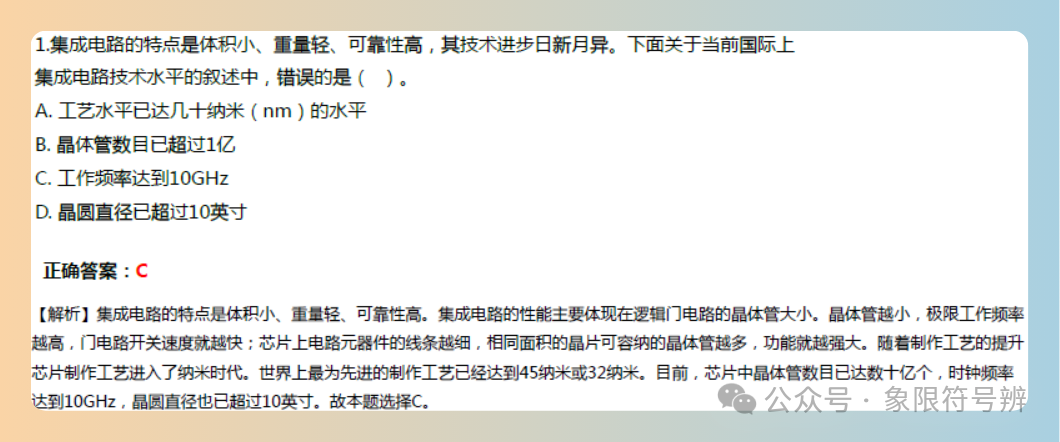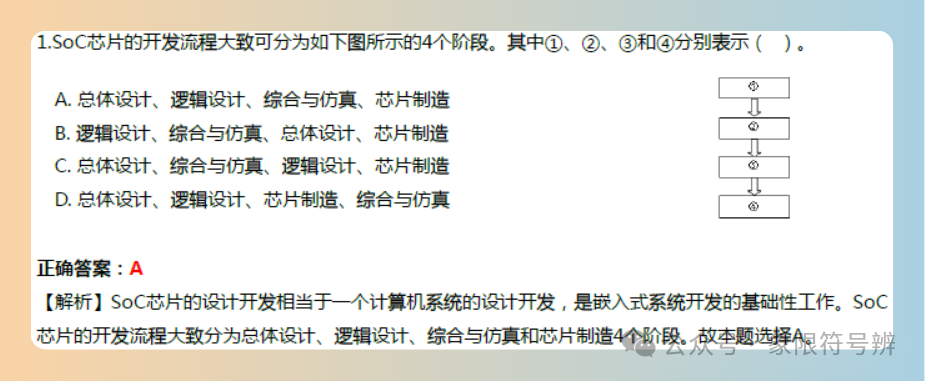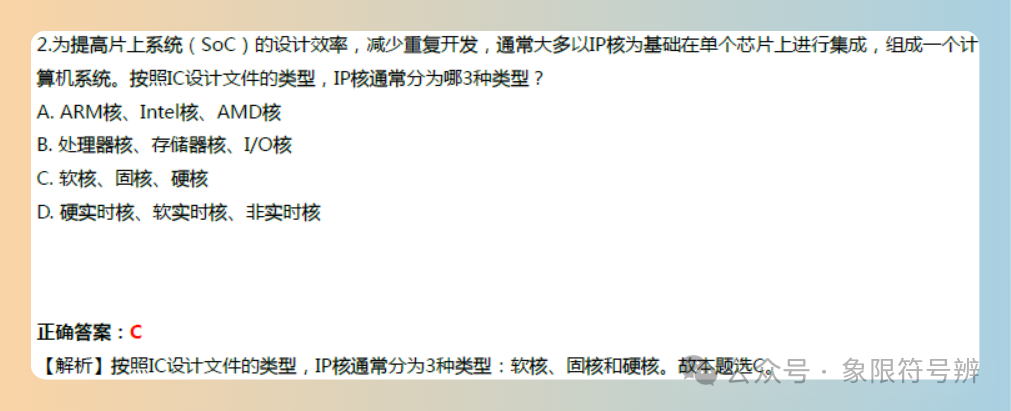Key Knowledge Points in Chapter One:
Understand the characteristics, classifications, development, and applications of embedded systems, and be familiar with their logical components.
Understand the main types of embedded processing chips, be familiar with the SoC development process, and understand the significant importance of IP cores.
Be familiar with the encoding of Chinese and Western characters, as well as the types and processing of digital texts, and master the parameters, file formats, and main applications of digital images.
Understand the classifications and components of computer networks, be familiar with the main content of the IP protocol, and master the composition of the Internet and common access technologies.
1. Microelectronics Technology
1. Integrated Circuits and Manufacturing
Microelectronics technology is centered around semiconductor integrated circuits, which can be classified into small scale, medium scale, large scale, very large scale, and ultra-large scale based on the number of electronic components (such as transistors, resistors, capacitors, etc.) it contains. The common classifications are as follows:
Large Scale: Integrated circuits containing between 3,000 and 100,000 electronic components are termed large-scale integrated circuits (LSI);
Very Large Scale: Integrated circuits containing between 100,000 and 1,000,000 electronic components are termed very large-scale integrated circuits (VLSI);
Ultra-Large Scale: Integrated circuits containing more than 1,000,000 electronic components are termed ultra-large-scale integrated circuits (ULSI);
The manufacturing of integrated circuits requires several hundred processes, which are complex and technically challenging, involving a series of key technologies. Many processes must be completed in a temperature-controlled, humidity-controlled, ultra-clean cleanroom, and the production, control, and testing equipment is extremely expensive.
Integrated circuits are fabricated on silicon substrates.
The process technology used to manufacture integrated circuits is called silicon planar technology, which includes oxidation, photolithography, doping, and several other processes.
2. Development Trends of Integrated Circuits
The characteristics of integrated circuits are small size, light weight, and high reliability;
The operating speed of integrated circuits mainly depends on the size of the transistors that make up the logic gate circuits. The smaller the size of the transistors, the higher the limit operating frequency, and the faster the switching speed of the gate circuits.
The finer the lines of circuit components on the chip, the more transistors can be accommodated in the same area of the chip, enhancing functionality and speed.
Currently, the mainstream technology for mass production of integrated circuits in the world has reached a process level of 12-14 inch wafers, 45nm or 32nm, and is still improving.
The most complex CPU chips have integrated more than 1 billion transistors, and each chip used in mobile device storage cards contains up to 10 billion transistors.
3. Micro-Electro-Mechanical Systems (MEMS)
Micro-Electro-Mechanical Systems (MEMS) reflect the recent trend of micro-integration technology in mechatronics; current MEMS products include pressure sensors, accelerometers, gyroscopes, microphones, micro-jet devices, and many others, playing a significant role in promoting product miniaturization, intelligence, and integration.
Sample Question

2. General SoC and Dedicated SoC
1. General SoC Chips
These refer to SoC chip series developed by semiconductor companies through self-developed processor cores or by purchasing IP licenses from other companies according to the functional requirements of target application areas; examples include Samsung’s Exynos series, NVIDIA’s Tegra series, Qualcomm’s Snapdragon series, and MediaTek’s MT series, most of which use ARM’s Cortex-A architecture as the CPU core.
Note:
General SoC chips can have only one CPU (or DSP), referred to as single-core SoC, or multiple CPUs (or DSPs), referred to as multi-core SoC.
2. Dedicated SoC Chips
These are SoC chips customized by embedded system developers based on the specific requirements of the products to be developed; examples include Apple’s iPhone, iPad, and iPod consumer electronics.
3. SoC Chip Development Process
The development process of SoC chips consists of four stages: overall design, logic design, synthesis and simulation, and chip manufacturing.
-
• Overall Design: Determine the performance parameters of the SoC according to the system requirements specification and conduct a global design of the system. -
• Logic Design: Describe the results of the overall design using RTL language (source file), then use logic synthesis software to synthesize the source file, generating the simplest Boolean expressions and signal connections. -
• Synthesis and Simulation: This stage involves synthesizing and simulating the chip circuit based on the circuit diagrams generated from RTL. -
• Chip Manufacturing: The verified logic circuits are configured into the SoC chip and interconnected with other circuits.
4. IP Cores and Their Reuse
1. IP Cores
IC design files in libraries are classified into three categories based on their functional complexity: gate level, including various basic gate circuits; register transfer level, such as registers, multiplexers, decoders, data converters, etc.; and behavioral level (also known as functional level), such as CPUs, DSPs, memory, buses, and interface circuits.
These completed and verified ICs have fixed, irreducible functional characteristics, referred to as “cores,” with the corresponding database known as the “core library.” Design files in the core library are protected under intellectual property (IP) rights. IP core classifications include soft cores, firm cores, and hard cores.
Note:
From the perspective of reusability frequency, reusability flexibility, and transferability to other processes, the preferred order of these three types of IP cores is soft cores, firm cores, and hard cores; from the perspective of ensuring performance and specifications, short time to market, minimal development workload, and cost insensitivity, the preferred order is hard cores, firm cores, and soft cores.
2. IP Core Reuse
The emergence of SoC chips is a product of the development of semiconductor integrated circuit technology to a certain stage, representing a leap in integrated circuit chip development;
IP cores are crucial for SoC development, and reusing IP cores can reduce R&D costs and shorten R&D time;
For example, all SoC chips contain CPUs, and the vast majority are integrated as IP cores in SoC chips, with very few designed and developed independently;
Currently, the main CPU cores include ARM, MIPS, PowerPC, Coldfire, x86, 8051, etc.;
The licensing content of ARM cores includes: chip core design technology, complete software development tools (compilers, debuggers, software development kits SDK), and sales rights for chips containing ARM CPUs.
Sample Question


Alright, that’s it for this content!
Thank you for reading, and feel free to like, follow, and share.
See you next time!
